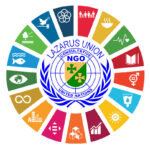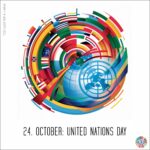
“Austria is Free!” – The Austrian State Treaty and the Rebirth of a Nation on 15 May 1955
On 15 May 1955, a remarkable scene unfolded in the baroque splendor of the Belvedere Palace in Vienna. Beneath the gaze of marble cherubs and ceiling frescoes, representatives of the four Allied occupying powers—the Soviet Union, the United States, the United Kingdom, and France—stood beside Austrian foreign minister Leopold Figl to sign a document that would change the trajectory of modern Austrian history: the Austrian State Treaty (Österreichischer Staatsvertrag).
Seventy years later, this date remains a cornerstone of Austrian identity and a poignant reminder of what was achieved after a decade of occupation, Cold War tension, and diplomatic tightrope-walking. Let us delve into the historical depths of this defining moment.
A Country Divided: Austria After World War II
Austria emerged from the ruins of the Third Reich in April 1945, following Nazi Germany’s defeat. However, its sovereignty was far from restored. Like Germany, Austria was divided into four occupation zones, each controlled by one of the Allied powers. Vienna itself was similarly partitioned, with an international zone in the city center jointly administered by the Allies.
Though the Moscow Declaration of 1943 had affirmed the idea of Austria as “the first victim of Hitlerite aggression,” this did not absolve the country of its complicity. The Allies made it clear that Austria would have to reckon with its role in the war and Nazi crimes.
Between 1945 and 1955, Austria walked a delicate line: rebuilding infrastructure, navigating political reconstruction, and surviving economically—all while under foreign control. Early post-war governments were provisional, and the specter of permanent division, akin to what eventually occurred in Germany, loomed large.
Cold War Chessboard: Austria Between the Blocs
The road to the State Treaty was anything but smooth. The emerging Cold War made negotiations with the Soviets particularly fraught. Austria’s position—geographically and ideologically—was precarious: a country wedged between East and West, with a population still reckoning with its role in fascism.
By the early 1950s, tensions had solidified into two ideological blocs. The United States and its allies viewed a free and democratic Austria as essential to their containment strategy. The Soviet Union, meanwhile, was wary of losing influence in Central Europe. The risk that Austria might join NATO, like West Germany, was particularly alarming to Moscow.
What finally broke the stalemate was a change in leadership and strategy—and a fair bit of Cold War realpolitik. After the death of Stalin in 1953, Soviet foreign policy under Khrushchev became marginally more pragmatic. Austrian Chancellor Julius Raab and Foreign Minister Leopold Figl, seizing the moment, began back-channel discussions with Moscow, culminating in a surprise diplomatic breakthrough in Moscow in April 1955.
15 May 1955: The State Treaty Is Signed
O Austrian State Treaty, signed at the Belvedere Palace, formally ended the occupation and reestablished Austria as an independent, sovereign, democratic state.
The Treaty included several key provisions:
- Austria’s commitment to permanent neutrality: This was not part of the Treaty itself, but was declared later by Austria’s Parliament on 26 October 1955—now celebrated as Austrian National Day.
- A ban on unification with Germany (Anschlussverbot): A direct reaction to the events of 1938.
- Prohibitions on Nazi and fascist activities.
- Recognition of minority rights for groups such as Croats, Slovenes, Czechs, Slovaks, and Hungarians.
- No foreign military bases or alliances: A key demand of the Soviets, codified in Austria’s declaration of neutrality.
But the true emotional climax came in Leopold Figl’s simple, powerful words as he presented the signed treaty to the press and the Austrian people:
„Österreich ist frei!“
(“Austria is free!”)
It was a moment of catharsis—both for a generation scarred by war and dictatorship, and for a country that had spent ten years in a kind of limbo.
A Model of Neutrality? Austria’s Post-1955 Role
Austria’s unique neutral status—neither aligned with NATO nor the Warsaw Pact—became a cornerstone of its foreign policy. During the Cold War, Austria played host to numerous international organizations, most notably the United Nations Office at Vienna and the International Atomic Energy Agency (IAEA).
Neutrality allowed Austria to become a diplomatic bridge-builder. Yet it was not a license for passivity. Austria remained committed to democracy, European integration (joining the EU in 1995), and international peacekeeping.
Still, neutrality has always been a living, sometimes contested concept. Debates continue today over what neutrality means in an interconnected, militarized, and often polarized global context—especially with Austria’s involvement in EU defense initiatives or reactions to Russian aggression in Ukraine.
Legacy and Commemoration
Each year on 15 May, Austria commemorates the signing of the State Treaty—though 26 October (the date of the neutrality declaration) is the formal national holiday.
O Belvedere Palace, where the Treaty was signed, remains a pilgrimage site for patriotic reflection. Figl’s iconic declaration is still taught in schools, still etched into national consciousness.
But memory is not without its complexities. The narrative of Austria as a “victim” has been increasingly scrutinized. Historians now acknowledge more openly Austria’s role in the Nazi regime, the complicity of many of its citizens, and the long-delayed reckoning with its past.
Conclusion: A Quiet Miracle of Sovereignty
In a century often defined by division, extremism, and occupation, Austria’s regaining of full sovereignty without war, through diplomacy and compromise, stands as a rare success story.
O Austrian State Treaty is not just a piece of Cold War ephemera; it is a symbol of what careful diplomacy, timing, and national will can achieve. In an age when geopolitical fault lines are re-emerging, this anniversary is a timely reminder: sovereignty, freedom, and neutrality are not permanent states—they are negotiated, maintained, and sometimes dearly earned.
On this day, we remember: Austria is free. And freedom, as ever, is fragile.
“Austria is Free!” – The Austrian State Treaty and the Rebirth of a Nation on 15 May 1955
On 15 May 1955, a remarkable scene unfolded in the baroque splendor of the Belvedere Palace in Vienna. Beneath the gaze of marble cherubs and ceiling frescoes, representatives of the four Allied occupying powers—the Soviet Union, the United States, the United Kingdom, and France—stood beside Austrian foreign minister Leopold Figl to sign a document that would change the trajectory of modern Austrian history: the Austrian State Treaty (Österreichischer Staatsvertrag).
Seventy years later, this date remains a cornerstone of Austrian identity and a poignant reminder of what was achieved after a decade of occupation, Cold War tension, and diplomatic tightrope-walking. Let us delve into the historical depths of this defining moment.
A Country Divided: Austria After World War II
Austria emerged from the ruins of the Third Reich in April 1945, following Nazi Germany’s defeat. However, its sovereignty was far from restored. Like Germany, Austria was divided into four occupation zones, each controlled by one of the Allied powers. Vienna itself was similarly partitioned, with an international zone in the city center jointly administered by the Allies.
Though the Moscow Declaration of 1943 had affirmed the idea of Austria as “the first victim of Hitlerite aggression,” this did not absolve the country of its complicity. The Allies made it clear that Austria would have to reckon with its role in the war and Nazi crimes.
Between 1945 and 1955, Austria walked a delicate line: rebuilding infrastructure, navigating political reconstruction, and surviving economically—all while under foreign control. Early post-war governments were provisional, and the specter of permanent division, akin to what eventually occurred in Germany, loomed large.
Cold War Chessboard: Austria Between the Blocs
The road to the State Treaty was anything but smooth. The emerging Cold War made negotiations with the Soviets particularly fraught. Austria’s position—geographically and ideologically—was precarious: a country wedged between East and West, with a population still reckoning with its role in fascism.
By the early 1950s, tensions had solidified into two ideological blocs. The United States and its allies viewed a free and democratic Austria as essential to their containment strategy. The Soviet Union, meanwhile, was wary of losing influence in Central Europe. The risk that Austria might join NATO, like West Germany, was particularly alarming to Moscow.
What finally broke the stalemate was a change in leadership and strategy—and a fair bit of Cold War realpolitik. After the death of Stalin in 1953, Soviet foreign policy under Khrushchev became marginally more pragmatic. Austrian Chancellor Julius Raab and Foreign Minister Leopold Figl, seizing the moment, began back-channel discussions with Moscow, culminating in a surprise diplomatic breakthrough in Moscow in April 1955.
15 May 1955: The State Treaty Is Signed
O Austrian State Treaty, signed at the Belvedere Palace, formally ended the occupation and reestablished Austria as an independent, sovereign, democratic state.
The Treaty included several key provisions:
- Austria’s commitment to permanent neutrality: This was not part of the Treaty itself, but was declared later by Austria’s Parliament on 26 October 1955—now celebrated as Austrian National Day.
- A ban on unification with Germany (Anschlussverbot): A direct reaction to the events of 1938.
- Prohibitions on Nazi and fascist activities.
- Recognition of minority rights for groups such as Croats, Slovenes, Czechs, Slovaks, and Hungarians.
- No foreign military bases or alliances: A key demand of the Soviets, codified in Austria’s declaration of neutrality.
But the true emotional climax came in Leopold Figl’s simple, powerful words as he presented the signed treaty to the press and the Austrian people:
„Österreich ist frei!“
(“Austria is free!”)
It was a moment of catharsis—both for a generation scarred by war and dictatorship, and for a country that had spent ten years in a kind of limbo.
A Model of Neutrality? Austria’s Post-1955 Role
Austria’s unique neutral status—neither aligned with NATO nor the Warsaw Pact—became a cornerstone of its foreign policy. During the Cold War, Austria played host to numerous international organizations, most notably the United Nations Office at Vienna and the International Atomic Energy Agency (IAEA).
Neutrality allowed Austria to become a diplomatic bridge-builder. Yet it was not a license for passivity. Austria remained committed to democracy, European integration (joining the EU in 1995), and international peacekeeping.
Still, neutrality has always been a living, sometimes contested concept. Debates continue today over what neutrality means in an interconnected, militarized, and often polarized global context—especially with Austria’s involvement in EU defense initiatives or reactions to Russian aggression in Ukraine.
Legacy and Commemoration
Each year on 15 May, Austria commemorates the signing of the State Treaty—though 26 October (the date of the neutrality declaration) is the formal national holiday.
O Belvedere Palace, where the Treaty was signed, remains a pilgrimage site for patriotic reflection. Figl’s iconic declaration is still taught in schools, still etched into national consciousness.
But memory is not without its complexities. The narrative of Austria as a “victim” has been increasingly scrutinized. Historians now acknowledge more openly Austria’s role in the Nazi regime, the complicity of many of its citizens, and the long-delayed reckoning with its past.
Conclusion: A Quiet Miracle of Sovereignty
In a century often defined by division, extremism, and occupation, Austria’s regaining of full sovereignty without war, through diplomacy and compromise, stands as a rare success story.
O Austrian State Treaty is not just a piece of Cold War ephemera; it is a symbol of what careful diplomacy, timing, and national will can achieve. In an age when geopolitical fault lines are re-emerging, this anniversary is a timely reminder: sovereignty, freedom, and neutrality are not permanent states—they are negotiated, maintained, and sometimes dearly earned.
On this day, we remember: Austria is free. And freedom, as ever, is fragile.




